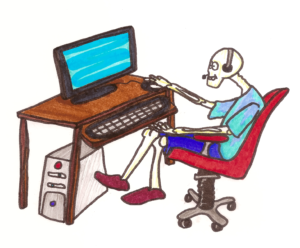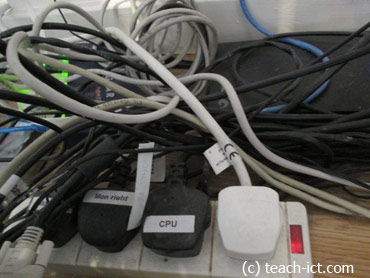
Indeed, contrary to what much early workstation advice may have preached, there is absolutely not one best position to adopt when using any form of computer equipment long-term. Adopting a range of postures across the working day can also help to reduce potential long-term musculoskeletal problems, and as can be associated with the maintenance of a prolonged static posture. The potential for RSI to develop or to be further inflamed can fairly easily be reduced by varying work patterns to provide breaks for those involved in constant typing. In the United States, the National Institute of Occupational Health has reported that 40 per cent of people working predominantly with computers suffer some RSI symptoms, with over ten per cent experiencing constant discomfort.


Early signs of repetitive strain injury include a tingling or numbness in the finger or fingers impacted, and pain or even swelling across the hands and even upper arms.

Repetitive strain injury can result from prolonged high-speed typing, intensive use of a mouse, or indeed the long-term use of a computer gaming control pad. As a result of such repetitive activity, tenosynovitis (swollen muscles) or carpal tunnel syndrome (swollen tendons) may develop. This is attributed to the excessive performance of repetitive, dextrous operations. Repetitive strain injury (RSI) is one such condition. Such conditions may range from mild aches and pains, through to chronic tissue and/or muscular complaints. Upper limb disorders is a term used to describe a range of conditions affecting the fingers, hands, arms and shoulders.
Health and safety with computers at work skin#
The health problems most highly associated with the use of computer equipment are upper limb disorders, eye problems, stress and fatigue, and skin complaints. Hence, whilst the following does report the current legislation and guidance in respect of the use of computer equipment, its historical context also needs to be remembered. At the time, any health risks associated with mobile phones or wireless computer networks were also yet to be aired.
Health and safety with computers at work movie#
The existing Display Screen Equipment Regulations 1992 were written at a time when viewing a photograph - let alone a movie or TV programme - on a computer was not possible. However, given that it is also accepted in the UK that watching flashing video images on a television can induce such a fit, it becomes immediately obvious that both current guidance and legislation are inadequate. Not least this is because widespread computer use is still a relatively modern phenomenon, with the boundaries between computers and other electronic devices also continuing to blur.Ĭurrent UK legislation, for example, makes it clear that use of a computer should not induce a fit in an epileptic. However, proving with any degree of certainly the longer-term health impacts of computer use remains problematic. Some health effects - such as joint pain and eye strain following an extended period huddled typing at a screen and keyboard - are recognised as an actuality by many. Over the past twenty years a great many questions have arisen concerning the links that may exist between the use of computers and the health and safety of those who use them. Or for an overview you can watch the following ExplainingComputers video: This section outlines these potential health risks and provides an overview of the UK Display Screen Equipment Regulations 1992, and which implement in UK law European Union Directive 90/270/EEC.įor an alternative brief summary of information on this area, please see the UK Health and Safety Executive's booklet Working with VDUs. The long-term use of computers has been linked to a range of potential health problems, or "computing related disorders" (CRDs). Key Topics: Disorders Regulation Risk Assessments Workstation Requirements Info Diagram Eye Tests INTRODUCTION


 0 kommentar(er)
0 kommentar(er)
